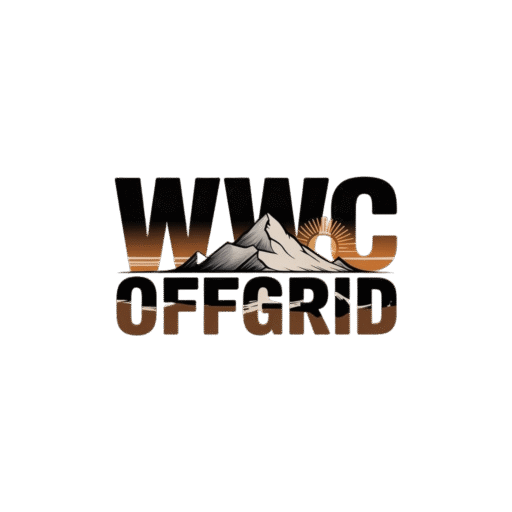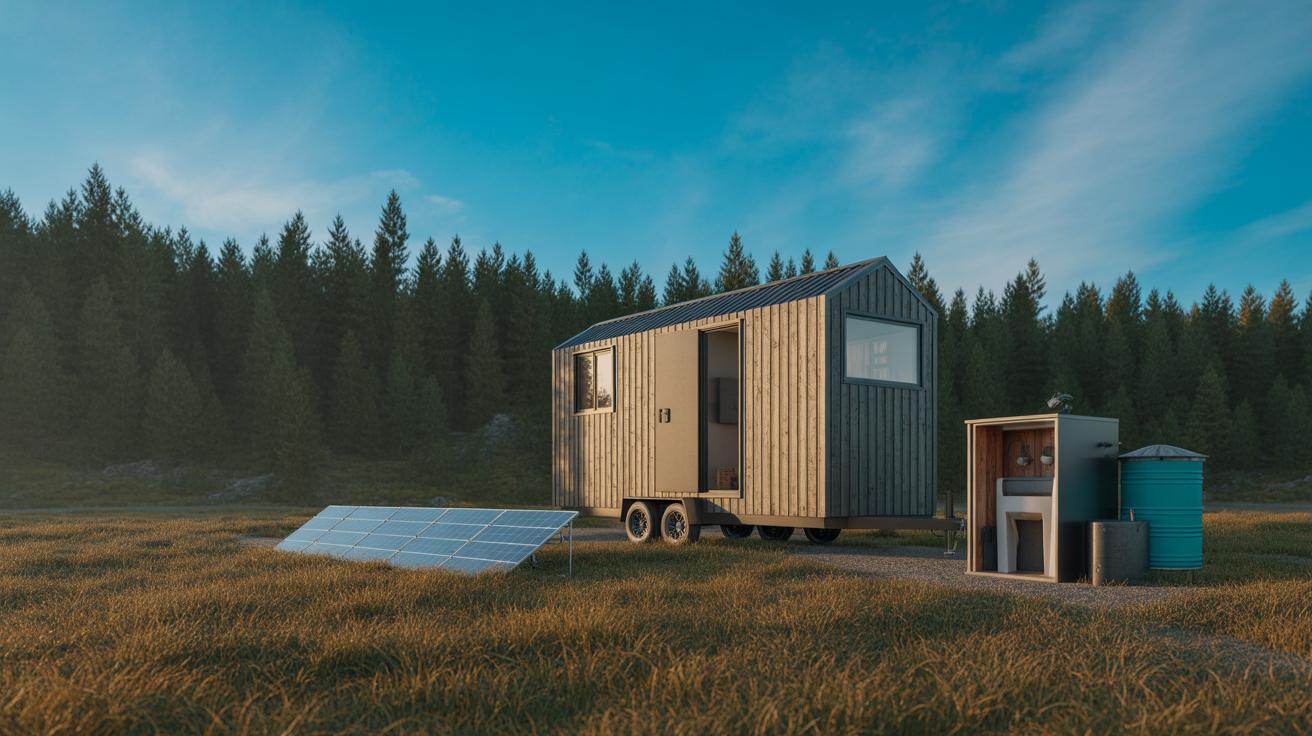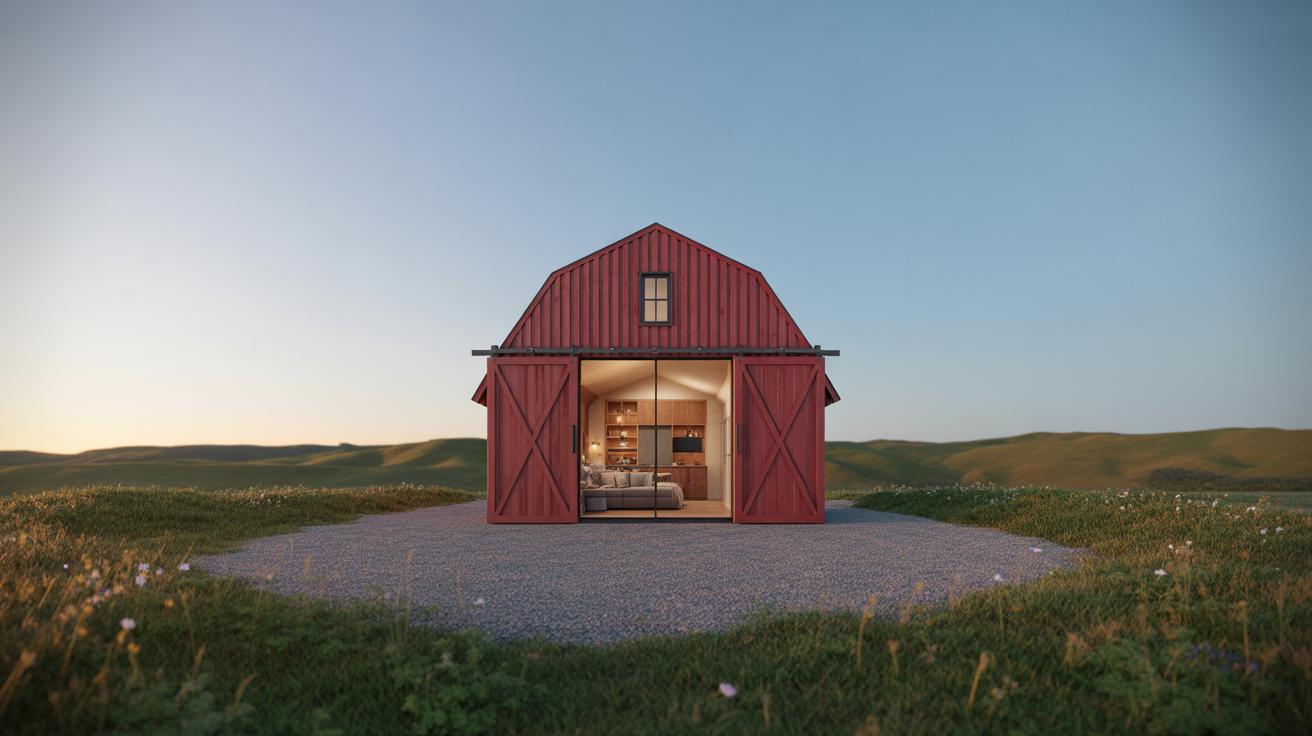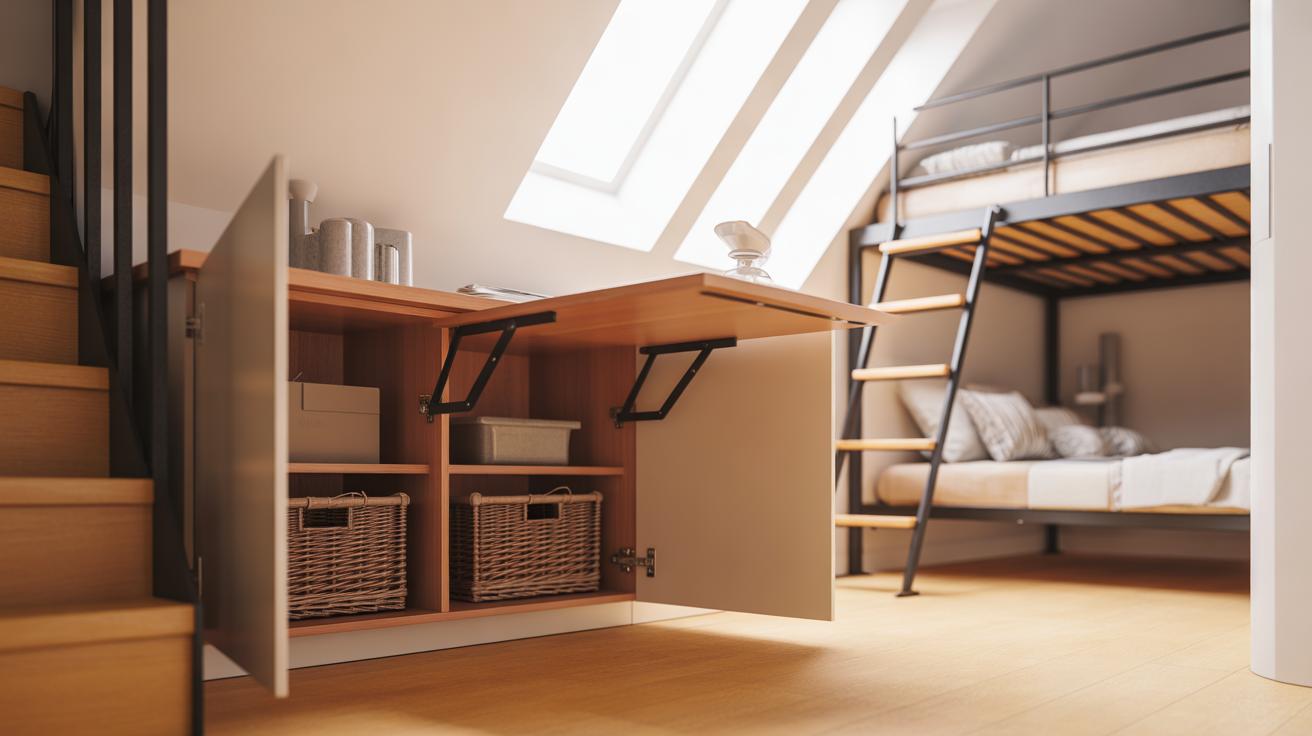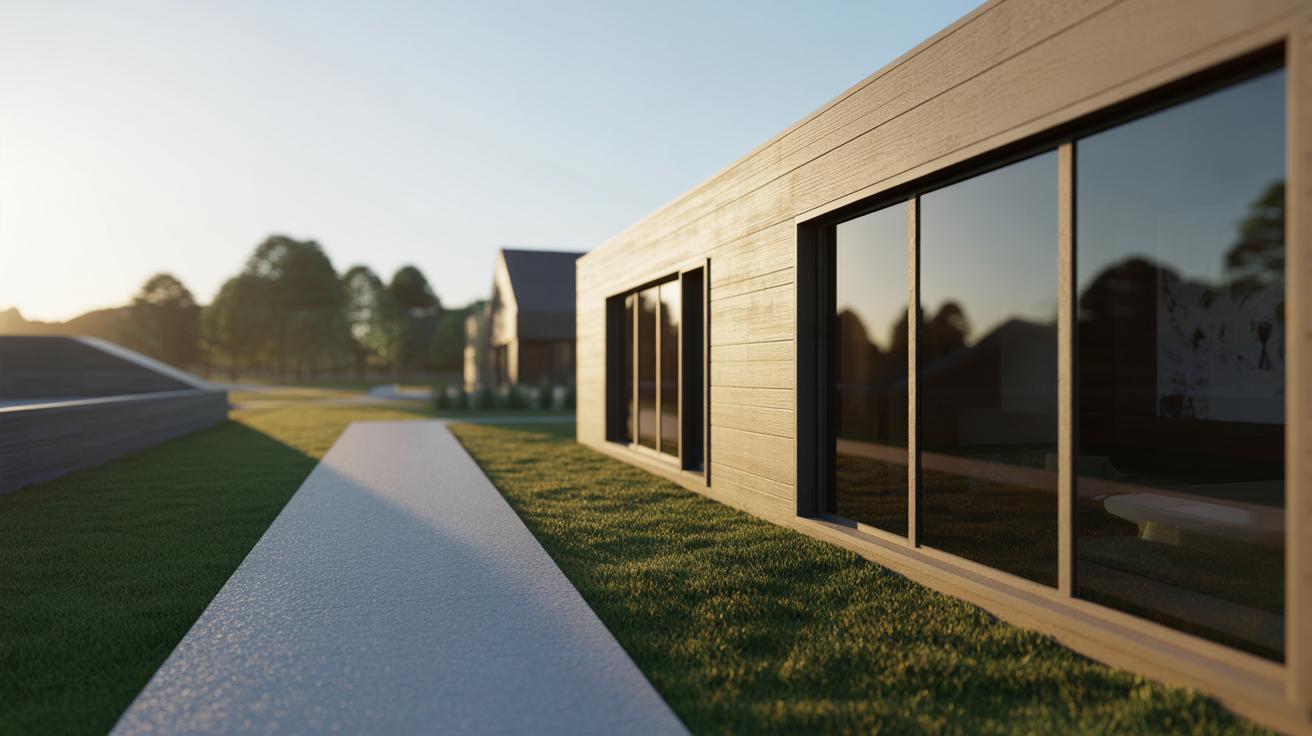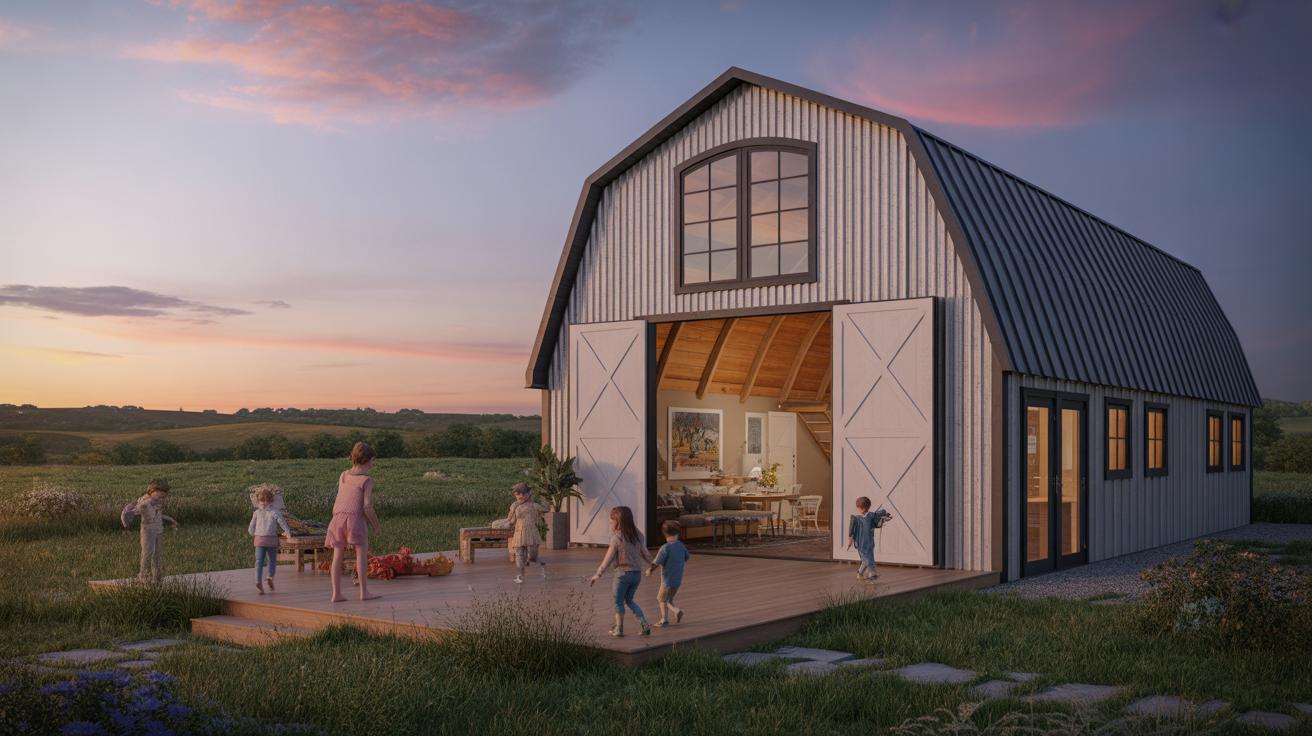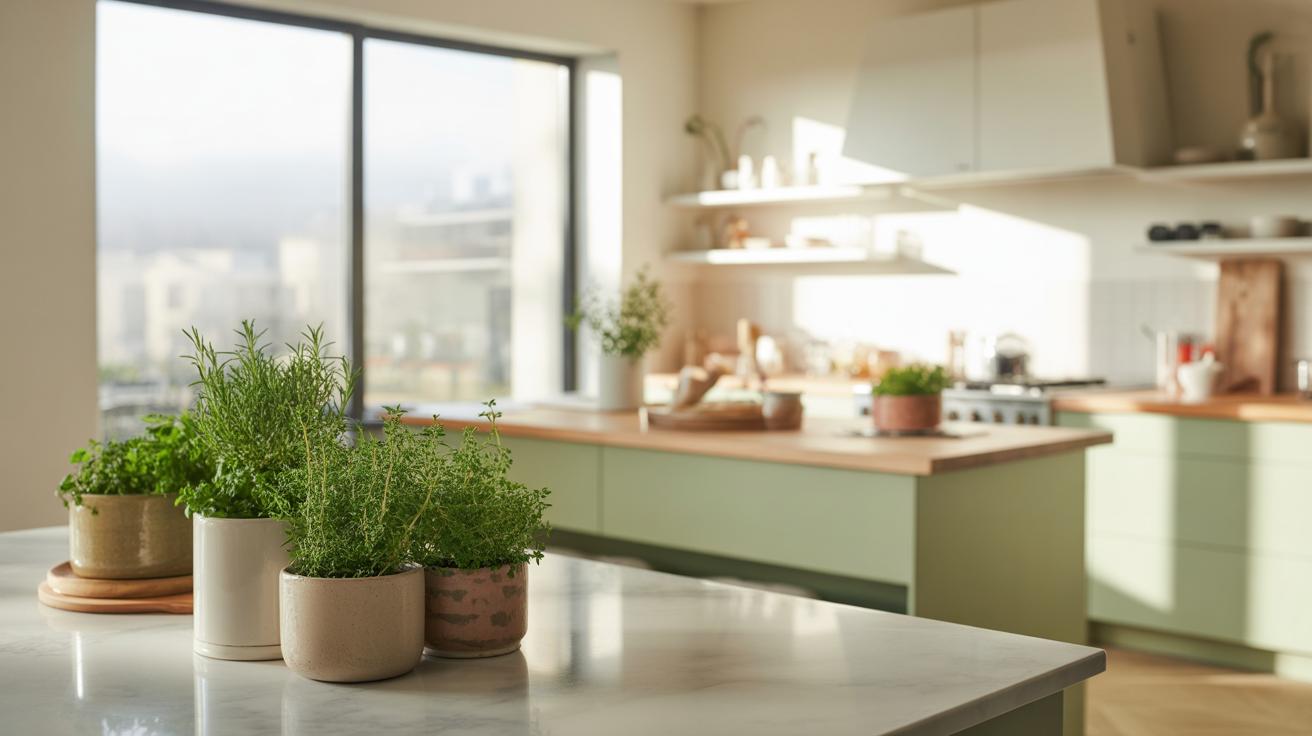Introduction
Living in a tiny home is becoming a choice for many seeking simplicity and sustainability. This lifestyle means choosing a smaller space with fewer possessions and more focus on essentials. Tiny homes offer a chance to reduce living costs and environmental impact. You will find options ranging from fixed small houses to mobile homes like trailers or converted buses. These homes often measure less than 400 square feet, yet they provide all the basic needs in a creative way. Tiny living encourages you to rethink space and how you use it efficiently.
Off grid living adds another layer of independence to tiny homes. It involves being self-sufficient without relying on city utilities such as electricity and water. Renewable energy like solar power often fuels these homes. You may collect rainwater or use composting toilets. This lifestyle appeals to those who want freedom, environmental care, or need housing in remote areas. Combining off grid principles with creative tiny home ideas leads to exciting possibilities for your living space and daily routines.
Understanding the Tiny House Movement
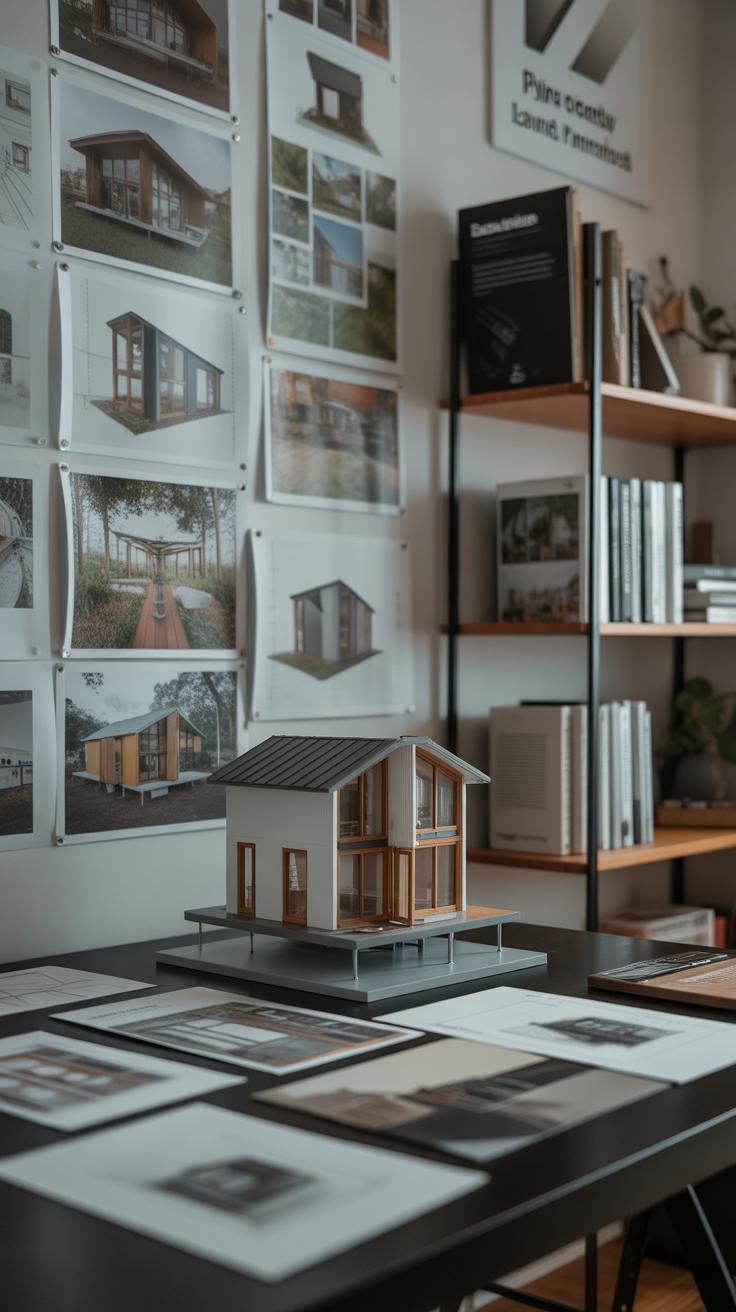
The tiny house movement began as a response to growing housing costs and a desire for simpler living. People started choosing smaller homes to focus on essentials rather than excess. A tiny home typically measures less than 400 square feet, though some designs shrink to under 100 square feet. These homes come in various forms including small cabins, trailers, or even converted vans. Their size encourages efficient use of space.
Affordability draws many to tiny homes, as building and maintaining one costs less than traditional houses. Many appreciate the simplicity that forces them to live with only what they need. Sustainability plays a big role, too, since tiny homes often require fewer materials and use less energy.
Some use tiny homes to downsize after major life changes. Others turn to them for emergency housing during disasters or for flexible living spaces near work or nature. What needs do you see a tiny home fulfilling in your life?
Key Features of Tiny Homes
Typical tiny homes range from 100 to 400 square feet. They might be mobile on trailers, fixed cabins, or converted vehicles like buses or vans. Designs focus on maximizing every inch with multi-use furniture, lofted beds, and built-in storage. Open floor plans help rooms feel larger than they are.
Many tiny homes include kitchens with compact appliances, bathrooms with composting toilets or small showers, and living areas that double as sleeping spaces. Heating might come from small wood stoves or efficient electric units. Off grid setups often integrate solar panels and water collection systems.
Have you thought about how you would arrange your space if every item had to serve more than one function?
Motivations Behind Tiny Living
Reducing costs remains a top reason people choose tiny homes. Lower monthly expenses mean less stress over money and more freedom to pursue passions. Environmental concerns also motivate many; tiny homes usually use fewer resources and generate less waste. Some people want a lifestyle that encourages minimalism and greater mobility.
Legal hurdles can pose challenges. Many areas enforce zoning laws that limit home size or require permanent foundations. Finding places to park a tiny home or secure land can be difficult. Despite this, more communities are updating rules as interest grows.
What challenges would you face in your area if you decided to live tiny? How might those obstacles be overcome?
Basics of Off Grid Living
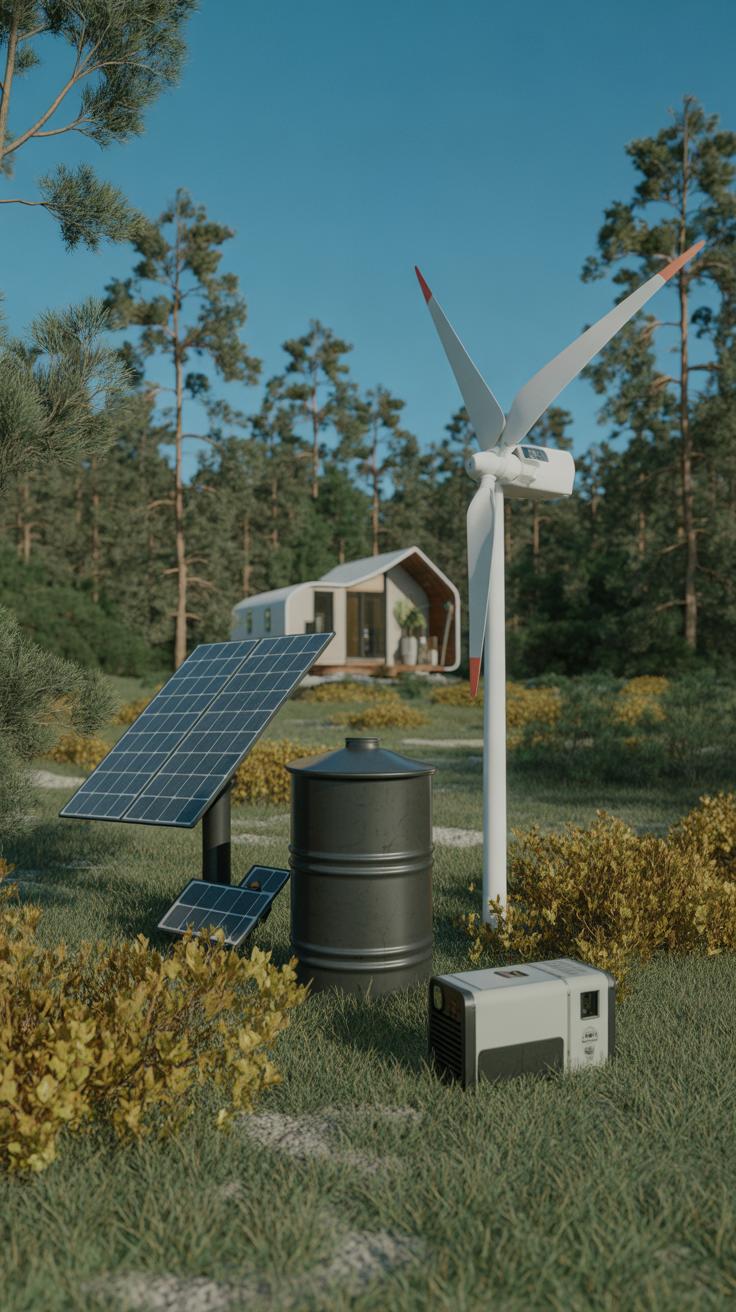
Living off grid means your home works without relying on public utilities. This means no connection to city electricity, water, or sewer systems. Your tiny home must generate power, secure water, and manage waste on its own.
Most off grid homes use renewable energy to produce electricity. You can rely on solar panels, wind turbines, or even small water turbines if near a stream. Without a power company, you store energy in batteries and control its flow with devices called controllers.
Water comes from sources you control, like wells or rainwater collected from your roof. You must treat it properly for safety and use.
Waste doesn’t go into a city sewer but into systems designed for off grid life. Composting toilets turn waste into usable compost, and greywater systems recycle water from sinks and showers.
Could you imagine the freedom and responsibility of managing every part of your home’s resources? Off grid living asks you to be self-reliant and thoughtful about your impact.
Energy Solutions for Off Grid Homes
Solar panels capture sunlight and turn it into electricity that powers your tiny home. They work well in sunny locations and don’t make noise. Wind turbines generate power from the wind. They suit windy places but need space and maintenance. Micro hydro systems use flowing water to create energy, which works only near streams or rivers.
Batteries store the power your home uses when the sun isn’t shining or the wind isn’t blowing. Choosing the right battery size helps you avoid running out of energy. Controllers regulate the voltage and current from your power sources to protect your batteries.
Combining solar panels with batteries and controllers lets your home run smoothly all day and night. What energy setup fits your location and lifestyle best?
Water and Waste Management
Collecting water is a key challenge when you live off grid. Rainwater harvesting stores water from your roof in tanks or barrels. Wells draw underground water through pumps. Both approaches require filters to keep water clean for drinking and cooking.
Wastewater comes from sinks, showers, and toilets. Composting toilets avoid water use by turning human waste into compost over time. Greywater systems reuse water from sinks and showers for irrigation or flushing toilets. They reduce consumption and keep your footprint small.
How will you collect and conserve water to meet your daily needs? Managing waste responsibly keeps your tiny home healthy and eco-friendly.
Design Principles for Creative Tiny Homes
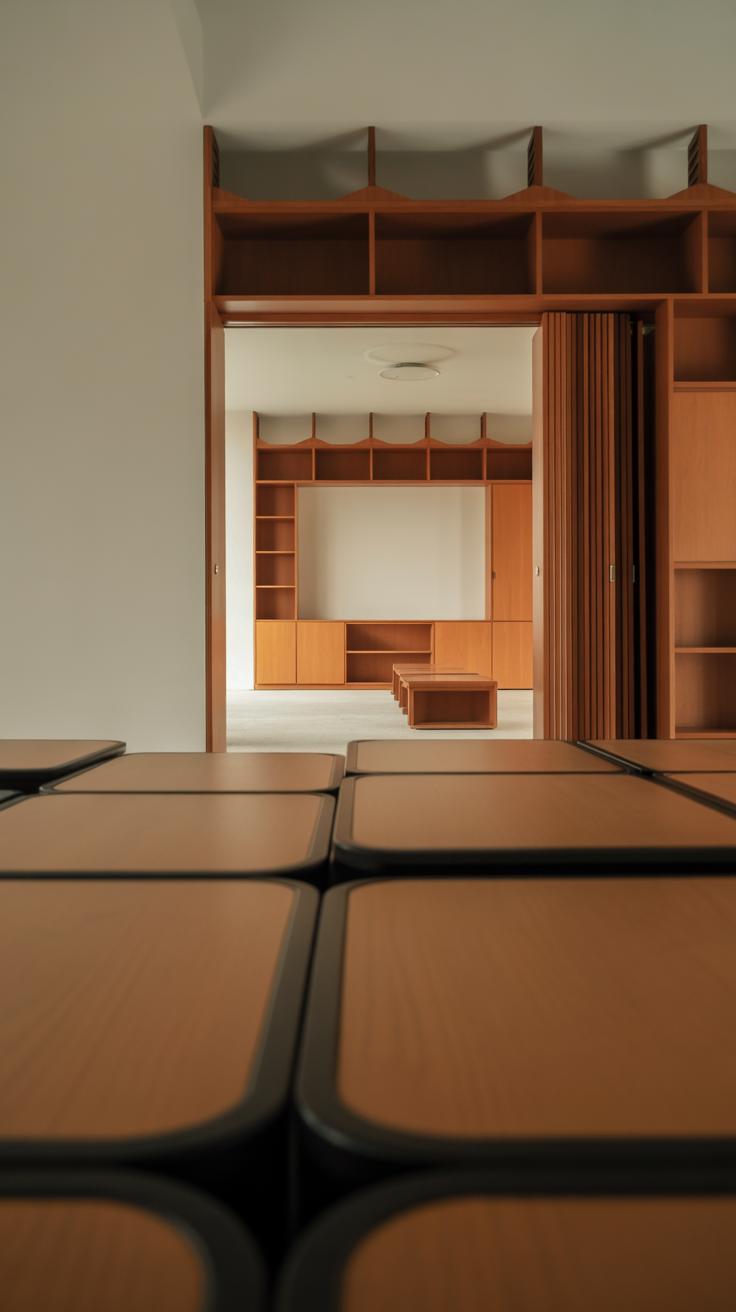
Creativity shapes how tiny homes stay practical and inviting. Multi-use furniture helps you use every inch wisely. For instance, a bench can store items inside and also serve as seating. Flexible layouts let you change your space to fit different activities. Think of a table that folds down when not needed or a bed that lifts to reveal storage.
Decorating small spaces calls for smart choices. Mirrors make rooms feel bigger. Choosing simple patterns keeps the space calm. Plants bring life without cluttering. How can you add personality without crowding your tiny home? Focus on pieces that serve more than one purpose and fit your lifestyle.
Maximizing Space Use
Using space carefully means finding pockets for storage everywhere. Under-floor storage, built-in shelves, and furniture with hidden compartments keep things tidy. Foldable chairs and tables tuck away when unused. A sofa that pulls out into a bed cuts down on extra furniture. What items do you use daily that could get new homes in clever spots?
Try wall-mounted racks or pegboards to hold tools and kitchen gear. This frees up counters and closets. Magnetic strips on kitchen walls keep knives easy to reach and off the surfaces. Each choice can reduce clutter, opening the room for other needs.
Aesthetic and Comfort in Small Spaces
Good lighting brightens tiny homes and lifts mood. Use layered light sources like lamps, overhead fixtures, and natural light. Colors impact how roomy and warm your home feels. Light tones expand the space visually, while warm colors add comfort.
Natural materials such as wood, stone, and cotton bring texture and calm. Soft rugs and throw blankets create cozy spots to relax. Can you combine comfort with minimalism by choosing fewer, better-quality furnishings? A simple color scheme paired with touches of nature often makes a small space feel peaceful and well cared-for.
Integrating Off Grid Systems into Tiny Homes

You can equip a tiny home with off grid technologies while keeping the design compact and efficient. Solar panels fit well on rooftops or fold-out mounts to save space. Battery banks store the energy but need to be tucked away in closets or under seating. Think about stacking systems vertically or using custom compartments to hide equipment.
A rainwater collection system can link directly to your tiny home’s gutter. Use a slim storage tank or flexible bladders that adapt to small areas. Filtration units, pumps, and inverters should be placed close together to minimize wiring and pipes. Each technical system can share wall spaces or fit beneath floors.
What parts of your tiny home can serve double duty? Consider integrating power components under a bench or using water tanks as foundation supports. Space-saving matters when adding these systems, so plan every inch carefully to balance comfort and sustainability.
Solar Power Setup for Tiny Homes
Start by measuring how much power your tiny home uses daily. Choose solar panels that provide at least 20-30% more capacity than your average needs. Place the panels on the roof for best sunlight exposure. Use adjustable mounts to tilt the panels towards the sun during different seasons.
Install a charge controller between the panels and your battery bank to protect the batteries and optimize charging. Pick deep-cycle batteries for longer life and store them in a cool, dry space. Connect an inverter to convert stored DC power to AC for common appliances.
Improve energy use by switching to LED lights and energy-efficient appliances. Monitor your system with simple meters or apps. Could you track your power use daily to reduce waste and extend battery life? Small steps in managing electricity help keep your system effective over time.
Water Solutions in Limited Space
Collect rainwater by funneling rooftop water into a narrow storage tank placed outside or underneath your tiny home. Use first-flush diverters to clear debris before water enters the tank. Compact filters then remove particles and bacteria, making water safer for daily use.
Install a gravity-fed or small electric pump to move water inside for cooking, washing, and drinking. Space-saving tanks can be shaped to fit unusual spots like under stairways or inside benches. Use transparent pipes to monitor water levels without opening tanks.
How can you use greywater for plants to reduce waste? Setting up drip irrigation from filtered greywater saves fresh water. Careful planning helps you blend water solutions into your tiny home without crowding your living space.
Materials and Construction Methods
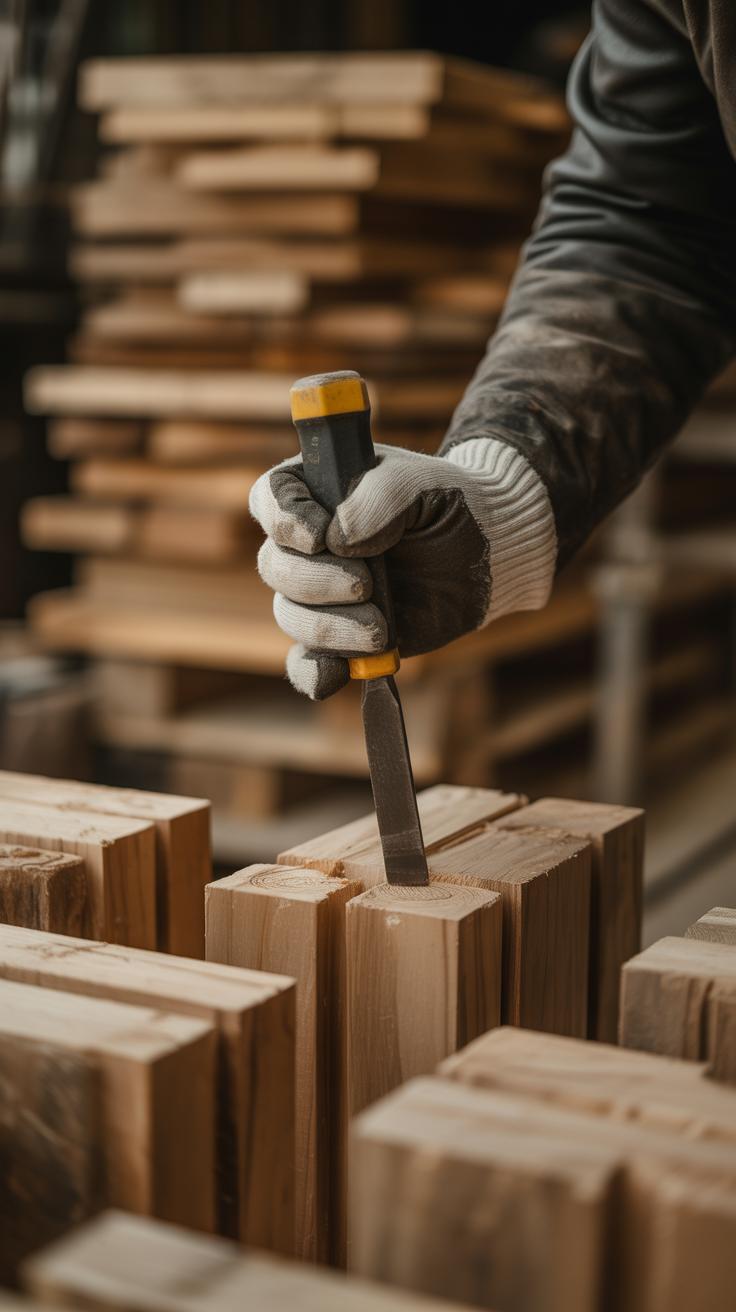
Choosing the right materials sets the foundation for a tiny home that lasts and works well off grid. Sustainable and durable materials reduce the need for frequent repairs and lower your impact on the environment. Reclaimed wood offers strength and character while cutting down on waste. Structural insulated panels (SIPs) combine insulation and framing in one, improving energy efficiency and speeding up construction. Metal, especially steel or aluminum, can resist pests, moisture, and heavy weather, making it a reliable choice for exterior walls or roofs.
Different building methods suit various off grid needs. Frame construction lets you customize layout and insulation. SIPs are great for quick builds with tight energy control. Modular building supports assembling parts off-site, reducing disruption. For foundations, using pier blocks or skid systems allows building without a full concrete slab, which fits uneven or remote land. Have you thought about which materials help keep your tiny home both light and strong for off grid living?
Choosing Sustainable Materials
Reclaimed wood boosts sustainability by reusing trees and adding natural warmth to your home. It can come from old barns, pallets, or demolition sites. Structural insulated panels (SIPs) come ready-made with foam insulation between wood or OSB layers. This reduces time and waste on the build while improving insulation for heating and cooling.
Metal components like corrugated steel roofs or metal siding last long and avoid rot or insect damage. Lightweight metals help keep mobile tiny homes manageable in weight. Bamboo and cork also appear as eco-friendly options due to fast growth and renewability. Think about the balance between using local, renewable resources and materials that protect your home against weather and wear.
Building for Mobility and Stability
Mobile tiny homes require framing attached securely to a trailer frame. Methods like steel chassis with reinforced joists improve stability during travel. Walls and roofs often use lightweight materials to reduce trailer load. Tight sealing prevents drafts and moisture that harm moving homes over time.
Off grid cabins fixed on the land often need stronger foundations that resist wind and shifting soil. Concrete piers or screw piles offer stability without large concrete slabs. Heavy-gauge framing and anchoring help keep the home steady during storms. Are you planning a movable tiny home or a fixed cabin? Your choice shapes how you build for stability on the road or in the wild.
Financial Considerations and Budgeting

Estimating expenses helps you plan your tiny off grid home without surprises. Material costs include wood, insulation, plumbing, and solar panels. Labor can range from hiring contractors to paying specialist installers for systems like composting toilets or water filtration. Off grid technology often means upfront costs for solar setups, batteries, and rainwater collection. Buying land adds another major cost—remote locations might be cheaper but could raise expenses for road access and utility setup. Have you thought about how these costs compare to a traditional home? Tiny homes usually have lower initial costs but require careful planning to avoid unexpected fees later.
Estimating Costs
Materials form the biggest part of your budget. Sourcing reclaimed wood or secondhand fixtures cuts prices substantially. Labor varies depending on your skills; DIY builds reduce costs but take time. Off grid tech expenses include solar panels, batteries, water tanks, and sometimes wind turbines. Land prices depend on location—rural areas often cost less but may need additional investment for access and permits. Don’t forget permits and inspections that might add to your budget. How will you break down your expenses before starting to build?
Saving Money and Financing
You can save money by doing parts of the construction yourself. Learning basic carpentry or wiring skills helps avoid costly labor. Choose affordable but durable materials like recycled metal or pallets. Look for local grants that support sustainable living or renewable energy projects. Some banks and credit unions offer loans tailored for tiny homes or off grid lifestyles. Crowdfunding and peer-to-peer loans provide alternatives if traditional financing isn’t an option. Could combining DIY work with funding programs keep your project on track financially?
Legal and Zoning Issues
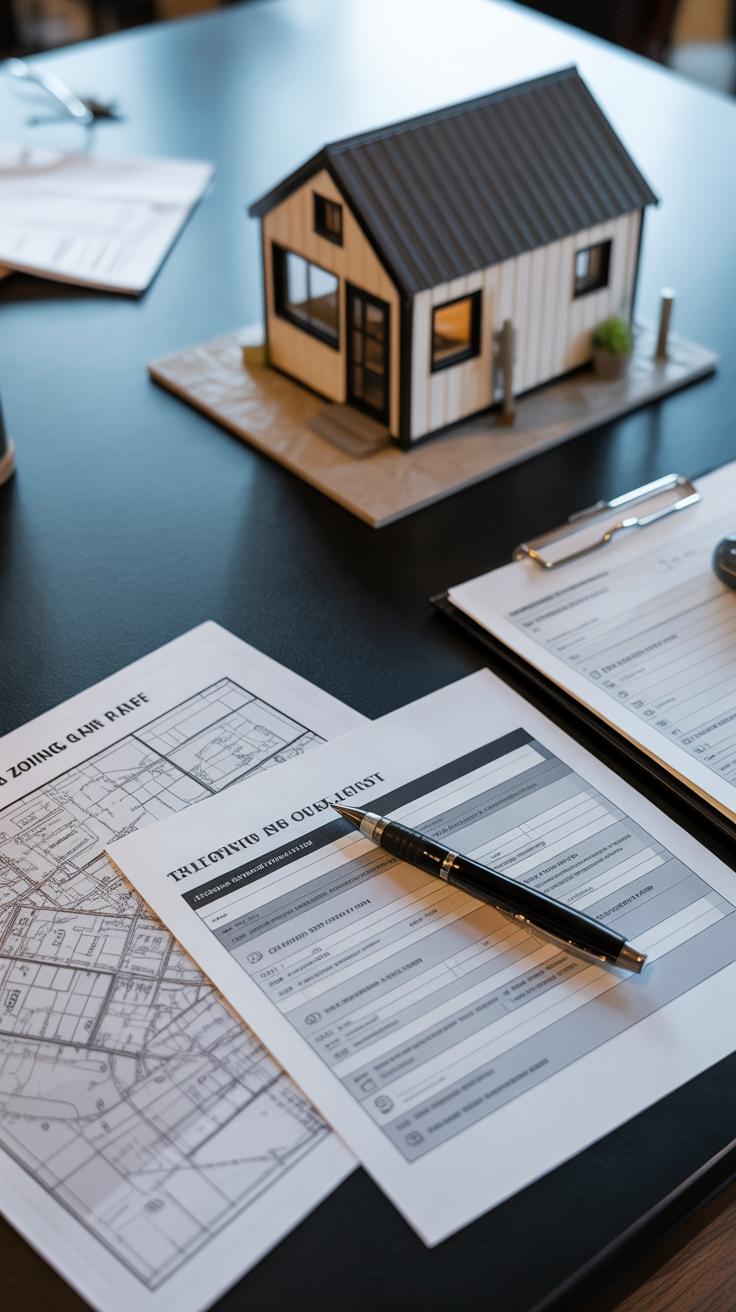
Navigating legal frameworks can be one of the biggest challenges when living in a tiny home off grid. Zoning laws often decide where you can place your tiny home. Some areas only allow traditional houses and may require a minimum square footage. Others may restrict living spaces on wheels, making tiny homes on trailers difficult to place long-term.
You should ask yourself: Does the land permit residential use? Can you install utilities or septic systems? Knowing local zoning rules helps avoid costly fines or forced removal. Many tiny home dwellers find success by looking for land classified as agricultural, rural, or with flexible zoning.
Building codes require your tiny home to meet safety and health standards. Permits often depend on whether your home is considered a permanent structure or a vehicle. You’ll need electrical, plumbing, and structural approvals. Following these rules protects you and helps maintain resale value.
Start by consulting your local building department. They can inform you about permits and inspections required for off grid systems like solar panels and composting toilets. Some areas offer alternatives or tiny house-specific codes.
Have you checked what permits come with your chosen building method? Understanding these legal details early saves time and hassle. Working with professionals or local tiny home groups can provide guidance through this process.
Lifestyle and Community Aspects

Daily Living Adjustments
Your daily routine will shift when you choose tiny home living off the grid. Limited space means you must be intentional with your belongings and activities. Each item should serve a clear purpose. You will find yourself adopting minimalism, focusing on what truly matters to you. Managing energy becomes part of your day. You may time shower use or cooking to match solar power availability. Water conservation turns into a habit, not just an idea. You also learn to adapt meals to the resources you produce or store. These changes influence how you plan your day and your priorities. Have you thought about how living smaller could reshape your habits and mindset?
Connecting With Like-Minded People
Living off grid does not mean isolation. Tiny home villages offer shared land where people live close but respect privacy. These communities often share resources, skills, and social events. Online groups provide another way to connect. Forums and social media groups help you find support and swap advice. Events like meetups or workshops build friendships and teach valuable skills. Sharing your experience with others eases challenges and keeps you inspired. Do you have nearby tiny home groups or events to join? Building these connections can enrich your off grid lifestyle and create a network for help and ideas.
Future Trends and Innovations
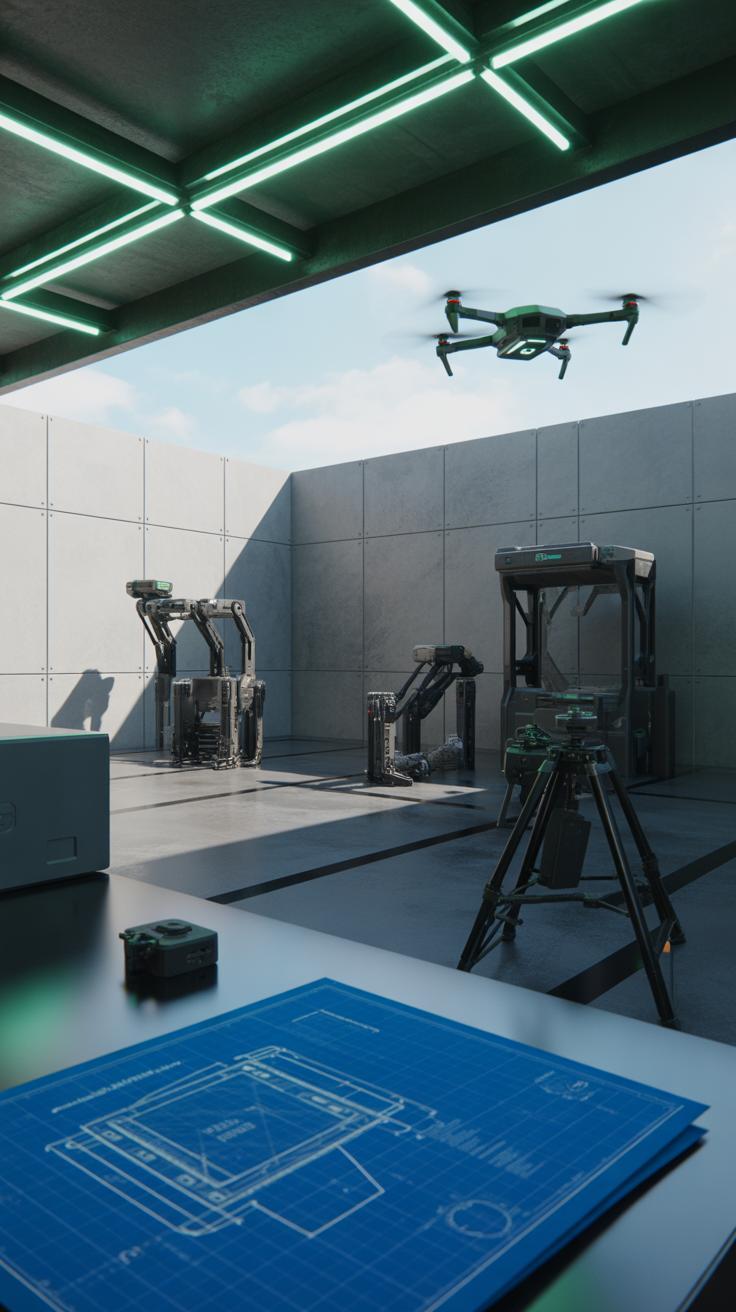
Technology Advancements
New technologies are making tiny homes more efficient and comfortable. Solar panels now come with better storage batteries, allowing you to use energy longer without sunlight. Energy-efficient appliances use less power, saving your resources.
Smart home systems let you control lighting, heating, and security from your phone, even when off grid. Sensors can track water usage and air quality, helping you live healthier and conserve resources.
Advanced insulation materials keep your home warm in winter and cool in summer with less energy. Imagine a tiny home that adjusts its temperature automatically. What if your home could anticipate your needs and respond accordingly?
Expanding Tiny Home Concepts
Tiny home designs are moving beyond simple cabins on wheels. Some combine small living spaces with mobile gardens or workspaces. Hybrid models blend tiny homes with shipping containers or yurts, offering flexibility for different climates and terrains.
Communities try shared tiny homes that link several units with shared kitchens or more living areas. This can keep costs down and create social spaces while maintaining privacy. Could sharing some spaces be your key to sustainability without losing independence?
Modules that can be added or removed allow you to expand or shrink your home as your needs change. Spaces designed for multiple uses, like fold-out tables and hidden storage, help you make the most of every square foot.
Conclusions
Your journey to living in a tiny home off grid involves careful planning and smart design. Focus on using every inch of space effectively to meet your needs. Understand the off grid systems like solar power and water management to maintain independence. These choices can lower your living expenses and environmental footprint while increasing your freedom. Think about what features are essential for your comfort and how to integrate them seamlessly.
The tiny home movement offers diverse solutions—from mobile tiny houses to fixed off grid cabins. Choosing creative designs allows personalization and functionality. This lifestyle encourages you to value quality over quantity and live closer to nature. If you embrace these ideas, your tiny home can be a practical and enjoyable place to call your own. What is your vision for tiny and independent living?
